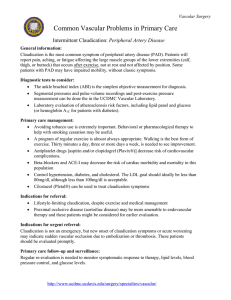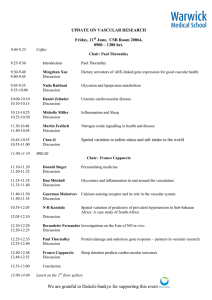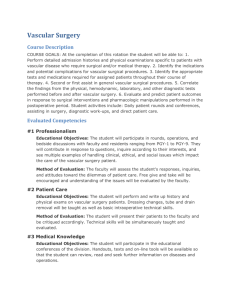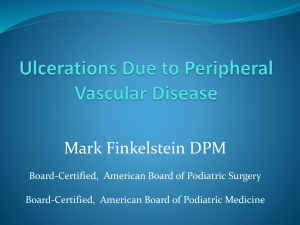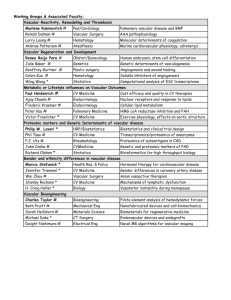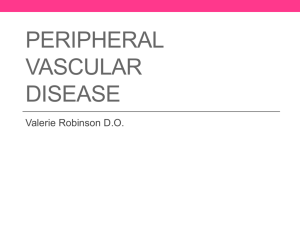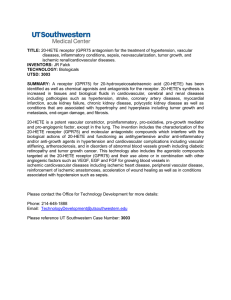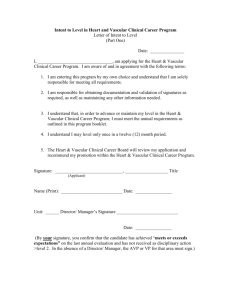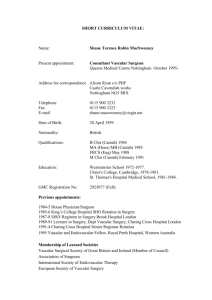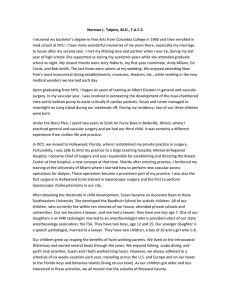VASCULAR SURGERY
advertisement
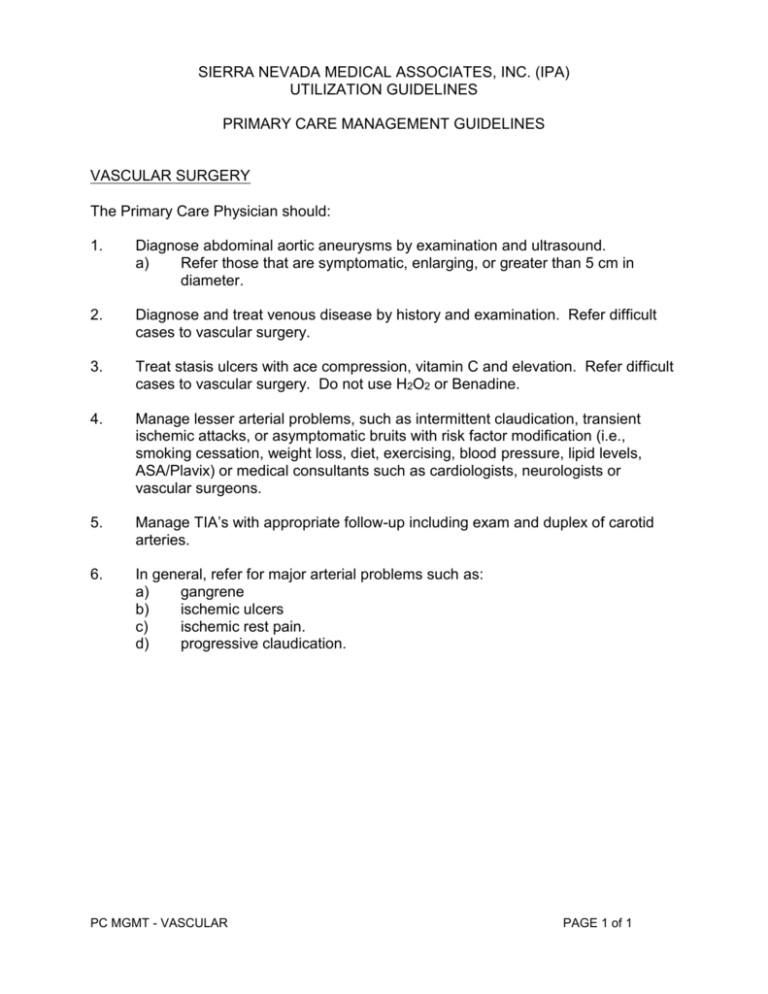
SIERRA NEVADA MEDICAL ASSOCIATES, INC. (IPA) UTILIZATION GUIDELINES PRIMARY CARE MANAGEMENT GUIDELINES VASCULAR SURGERY The Primary Care Physician should: 1. Diagnose abdominal aortic aneurysms by examination and ultrasound. a) Refer those that are symptomatic, enlarging, or greater than 5 cm in diameter. 2. Diagnose and treat venous disease by history and examination. Refer difficult cases to vascular surgery. 3. Treat stasis ulcers with ace compression, vitamin C and elevation. Refer difficult cases to vascular surgery. Do not use H2O2 or Benadine. 4. Manage lesser arterial problems, such as intermittent claudication, transient ischemic attacks, or asymptomatic bruits with risk factor modification (i.e., smoking cessation, weight loss, diet, exercising, blood pressure, lipid levels, ASA/Plavix) or medical consultants such as cardiologists, neurologists or vascular surgeons. 5. Manage TIA’s with appropriate follow-up including exam and duplex of carotid arteries. 6. In general, refer for major arterial problems such as: a) gangrene b) ischemic ulcers c) ischemic rest pain. d) progressive claudication. PC MGMT - VASCULAR PAGE 1 of 1

